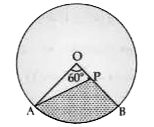The third term of an AP is 7 and the 7th term exceeds 3 times the third term by 2. Find the first term and the common difference and the sum of first 20 terms.Solution in Kannada
The correct Answer is:740
Step by step video, text & image solution for The third term of an AP is 7 and the 7^(th) term exceeds 3 times the third term by 2. Find the first term and the common difference and the sum of first 20 terms. by Maths experts to help you in doubts & scoring excellent marks in Class 10 exams.
Topper's Solved these Questions
- BOOK - OSWAAL PUBLICATIONCHAPTER - ARITHMETIC PROGRESSIONSEXERCISE - TEXTBOOK CORNER EXERCISE 1.14videos
ARITHMETIC PROGRESSIONS
- BOOK - OSWAAL PUBLICATIONCHAPTER - ARITHMETIC PROGRESSIONSEXERCISE - TEXTBOOK CORNER EXERCISE 1.221videos
ARITHMETIC PROGRESSIONS
- BOOK - OSWAAL PUBLICATIONCHAPTER - ARITHMETIC PROGRESSIONSEXERCISE - LONG ANSWER TYPE QUESTION-I11videos
ARITHMETIC PROGRESSIONS
- BOOK - OSWAAL PUBLICATIONCHAPTER - AREAS RELATED TO CIRCLES EXERCISE - LONG ANSWER TYPE QUESTIONS - I20videos
AREAS RELATED TO CIRCLES
- BOOK - OSWAAL PUBLICATIONCHAPTER - CIRCLES EXERCISE - TEXTBOOK CORNER (EXERCISE 4.2)13videos
CIRCLES
Similar Questions
In which of the following situations, does the list of numbers involved form an arithmetic progression, and why?
(i)The taxi fare after each km when the fare is Rs 15 for the first km and Rs 8 for additional km.
(ii) The amount of air present in a cylinder when a vacuum pump removes (14)th of the air remaining in the cylinder at a time.
(iii) The cost of digging a well, after every metre of digging, when it costs 150 for the first metre and rises by 50 for each subsequent metre.
(iv) The amount of money in the account every year, when 10000 is deposited at compound interest at 8 % per annum.02:27View SolutionFill in the blanks in the following , given that a is the first term, d the common difference and an the nth term of the A.P.
03:00View SolutionFind the sum of all natural numbers between 200 and 300 which are divisible by 6.
01:56View SolutionIn the given figure, AOB is a sector of angle 60∘ of a circle with centre O and radius 17 cm . If AP ⊥ OB and AP = 15 cm find the area of the shaded region.
 04:35View Solution
04:35View SolutionFrom a point Q ,the length of the tangent to a circle is 24 cm and the distacne to Q from the centre is 24.5 cm.The radius of the circle is
(a) 4.92 cm
(b)12 cm
©15 cm
(d)24.5 cm
02:51View SolutionThe sum of the first 3 consecutive terms of an increasing AP is 51 and the product of the first and third term of this AP is 273, then the third term is
03:17View SolutionThe sum of first three terms of an AP is 48. If the product of first and second terms exceeds 4 xx the third term by 12. Find the AP
03:32View SolutionDetermine the AP whose third term is 16 and the 7th term exceeds the 5th term by 12.
03:10View SolutionThe 4 th term of an A.P is equal to the 3 xx ofthe first term and 7 th term exceeds twice the 3 rd term by 1. Find first term and common difference
03:25View SolutionThe 4th term of an A.P. is three times the first and the 7th term exceeds twice the third term by four. Find the first term and the common difference.
View SolutionThe 4th term of an A.P. is three times the first and the 7th term exceeds twice the third term by 1. Find the first term and the common difference.
02:00View SolutionThe third term of an A.P. is 7 and the seventh term exceeds three times the third term by 2. Find the first term, the common difference and the sum of first 20 terms.
02:08View Solutionयदि एक समांतर श्रेढ़ी का तृतीय पद 7 है तथा सातवाँ पद तृतीय पद के तीन गुना से दो अधिक है , तो उसके प्रथम 20 पदों का योगफल ज्ञात कीजिए ।
03:43View Solutionएक समान्तर श्रेढ़ी का तृतीय पद 7 है तथा सप्तम पद तृतीय पद के तीन गुना से दो अधिक है । प्रथम पद सार्वान्तर तथा प्रथम 20 पदों का योगफल ज्ञात कीजिए
03:09View Solutionकिसी A.P. का चौथा पद, प्रथम पद का तिगुना है और 7वाँ पद तीसरे पद के दुगुने से 1 अधिक है। प्रथम पद और सार्व अंतर ज्ञात कीजिए।
04:56View Solution

